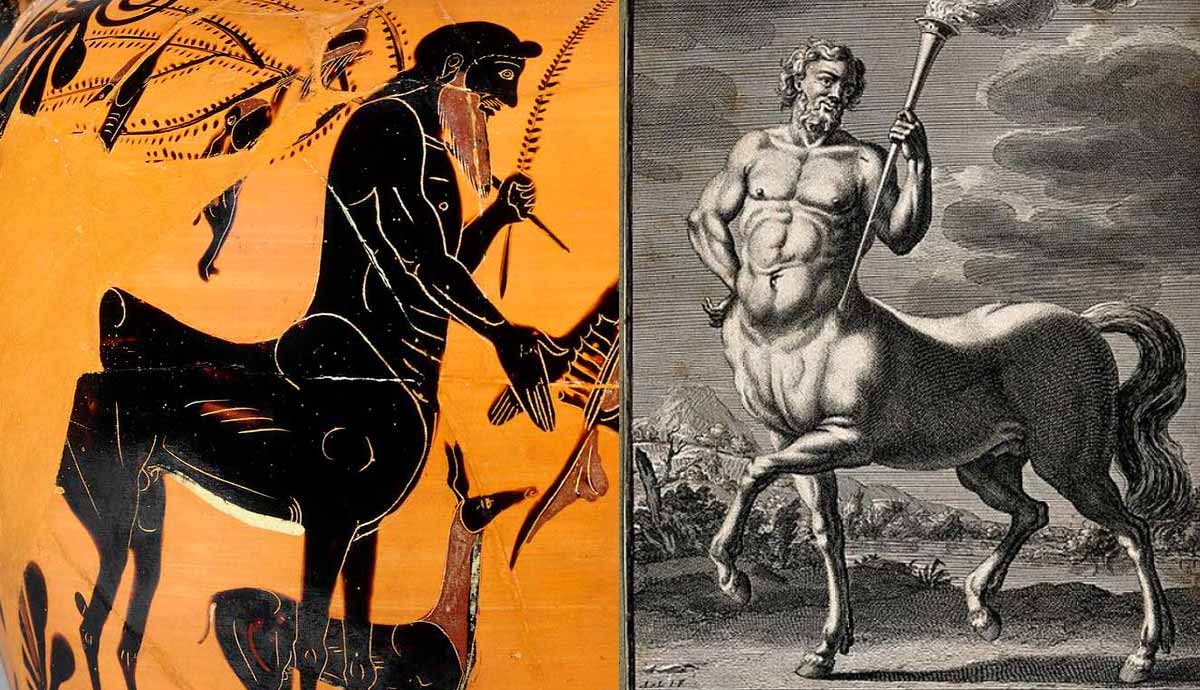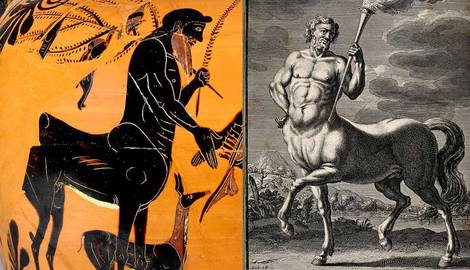
Centaurs played a recurring role within Greek mythology; half man, half horse, they often occupied a liminal space between man’s civilized nature and his wild, and most untamable instincts. While centaurs were often described as violent and uncontrollable brutes who acted in large packs, and seldom given individual names, certain centaurs in Greek mythology stood out for behaving in a remarkably different way from their peers.
The most famous of these was the wise, civilized and cultured Chiron, who taught some of Greek mythology’s greatest heroes. But there were also a handful of others whose stories made them well known. We take a look through the most famous centaurs that appeared in Greek myth and their associated stories.
Chiron

Described by Homer as “the most righteous of the centaurs,” Chiron was without a doubt the most famous centaur in all of Greek mythology. He was mentor and teacher to Greek warriors and heroes including Achilles, Theseus, Perseus, Asclepios and others. Kind, wise and noble, Chiron was different in temperament to the majority of the other Centaurs.
These character traits are often traced back to Chiron’s heritage, which was different from the other centaurs; born as the son of Cronus, king of the Titans, and the Oceanid Philyra, Chiron’s more temperate nature is often indicated in artworks, where he is given human front legs, and less hair across his legs and torso, making him more easily recognized.
Pholus

Another well-known, named centaur in Greek myth was Pholus. Much like Chiron, Pholus was wise, civilized and kind. Son of Silenus, the rustic god of winemaking, and the nymph Melia, Pholus was noble by birth, and this made him distinct in character from the other centaurs. While Chiron appeared in numerous myths, Pholus is generally only associated with one myth in particular, in which he encounters the Greek hero Heracles. Pholus resided on Mount Pholoe, and it was here that he and Heracles first came into contact. Heracles climbed the mountain in order to hunt the Erymanthian Boar as one of his twelve labors.
Pholus kindly opened up his cave as a safe haven for Heracles, where he served him meat and wine. When the other centaurs smelled the wine, they tried to charge into Pholus’s cave, but Heracles drove them away with his weapons, killing many and chasing the rest with his bow and arrow.
Pholus’ Death

When Pholus saw the dead centaurs outside his cave, he decided to bury them, but after examining one of the arrows that had killed them, he accidentally dropped one on his foot, and the arrow’s poisoned tip fell onto his foot, killing him instantly. When Heracles eventually returned to mount Pholoe and discovered Pholus’ body, he honored the centaur that had greeted him with such kindness by organizing him a funeral and burying him at the foot of the mountain where he had resided.
Nessus

Nessus is also a well-known centaur from Greek mythology. In contrast with Chiron and Pholus, Nessus was descended from Centaurus, the father of the entire centaur race, and this made him temperamentally more like the majority of the centaurs, with a wild and uncontrollable nature. Nessus took part in the centaur’s war against the Lapiths, and he survived the conflict, despite the Lapiths winning overall. Nessus then found work as a ferryman taking people across the Euenos River.
On one particular journey, Nessus had to carry the beautiful Deianeira across the river – he was so struck by her beauty he became overcome with desire and tried to force himself on her on their arrival to the shore. Little did Nessus know that Deianeira’s husband was none other than Heracles, who was waiting for his wife’s arrival – when he saw what was happening, Heracles dipped an arrow in poison and fired it at Nessus, killing him in an instant.

In his final moments of life, Nessus persuaded Deianeira to collect some of his blood, telling her it would provide a magical protection against Heracles being unfaithful. When Heracles set off for a heroes’ gathering, Deianeira smeared Nessus’ blood onto the tunic Heracles planned to wear to the party, not knowing that when the blood came into contact with Hercules’ skin it poisoned and killed him, thus leading Nessus to indirectly take out his own killer.











